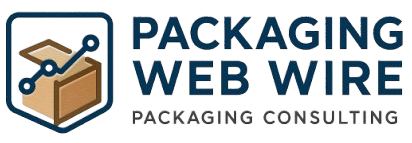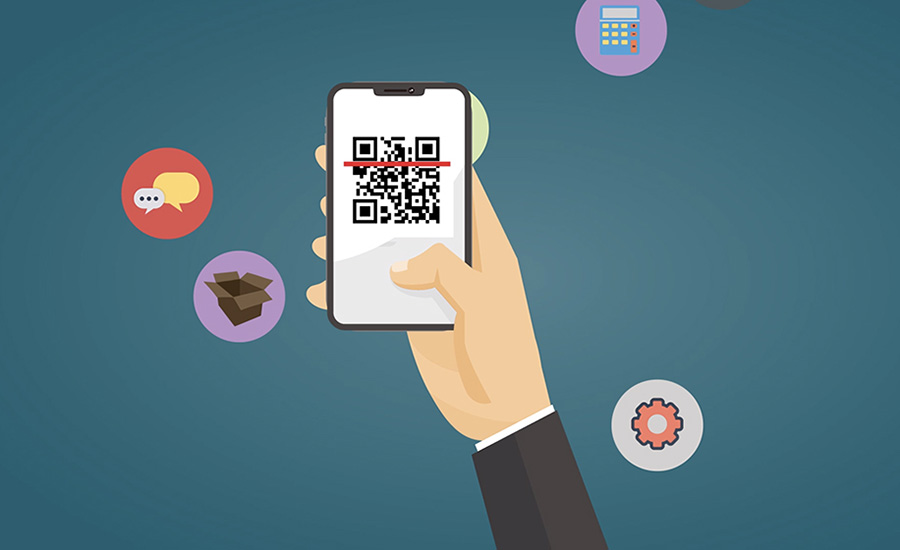The global anti-counterfeit packaging technologies market is projected to reach USD 450.58 billion by 2034, surging from USD 154.64 billion in 2024, and growing at a CAGR of 11.91% from 2024 to 2034. This significant expansion reflects the increasing demand for secure, intelligent, and technologically advanced packaging solutions that help businesses combat the global counterfeiting epidemic.
In an era where counterfeit products—from pharmaceuticals and electronics to food and fashion—are infiltrating global supply chains, packaging has emerged as a critical line of defense. Anti-counterfeit packaging solutions such as RFID tags, holograms, microprinting, serialization, cryptographic seals, and tamper-evident labels are transforming product authentication strategies across industries.
Invest in Our Premium Strategic Solution: https://www.towardspackaging.com/download-sample/5184
Anti-Counterfeit Packaging Technologies: Market Overview and Growth Factors
A Response to the Counterfeit Crisis
Counterfeiting is a global plague, costing the world economy over USD 500 billion annually, according to the OECD. Fake pharmaceuticals alone are responsible for nearly one million deaths annually, as per the World Health Organization (WHO). With technological tools becoming easily accessible to bad actors, replicating high-value product packaging has become alarmingly simple.
To counter this, businesses are heavily investing in anti-counterfeit packaging technologies that not only authenticate products but also alert supply chain stakeholders about tampering, diversion, or replication.
Request a personalized case study designed around your business goals and gain strategic insights into the global packaging industry. Connect with us at: sales@towardspackaging.com
Market Dynamics: Drivers, Restraints, and Opportunities
Market Drivers
-
Increasing Consumer Awareness & Safety Concerns
Today’s consumers are informed, cautious, and demand authenticity—especially when it comes to food, healthcare, and electronics. This awareness is fueling rapid adoption of anti-counterfeit measures. -
Rising Demand in Consumer Packaged Goods (CPG) Sector
The CPG industry, with its rapid product turnover and extensive distribution channels, is particularly vulnerable to counterfeit threats. Tamper-evident packaging and serialization are now standard tools for brand integrity protection. -
Growth in Pharmaceutical and Healthcare Industries
The surge in pharmaceutical sales, particularly in emerging economies, has necessitated the implementation of serialization and traceability technologies across supply chains. -
Stringent Government Regulations
Regulatory mandates in regions like North America and the European Union are enforcing serialization, digital tracking, and security labeling, accelerating market growth.
Market Restraints
-
Proliferation of Counterfeit Products Online
The rapid growth of e-commerce and online pharmacies has enabled counterfeiters to distribute fake goods with ease. Anti-counterfeit technologies often struggle to keep up with the scale and speed of illicit operations. -
Consumer Reliance on Convenience Over Authenticity
Many consumers, especially in developing regions, prioritize affordability and convenience over security, often unknowingly purchasing counterfeit products.
Key Market Trends: Enhancing Packaging with Smart Security
1. Integration of AI and Machine Learning
AI is revolutionizing the packaging industry by enabling real-time counterfeit detection, supply chain visibility, and predictive analysis. NeuroTags and Advanced Material Development’s nMark are pioneering AI-based solutions for real-time authentication and clone detection. These systems use deep neural networks to monitor packaging codes, identify anomalies, and instantly disable counterfeit access.
2. Rise of Invisible Cryptographic Signatures
Companies like Ennoventure have introduced cryptographic seals embedded invisibly into packaging, readable through smartphones. These imperceptible codes offer seamless consumer verification and serve as a powerful tool against forgeries.
3. Adoption of Tamper-Evident and Serialization Solutions
Tamper-evident seals, holographic labels, and serialized codes are now standard in pharmaceutical and food packaging. Serialization ensures unit-level traceability, improving recall efficiency and counterfeit detection across global supply chains.
4. Growth of Digital Anti-Counterfeiting Software
Digital packaging platforms provide cloud-based dashboards and blockchain-backed systems to monitor product authenticity and supply chain integrity. These solutions bridge physical and digital security by validating both packaging and product movement.
5. Augmented Reality (AR) for Consumer Engagement
AR-enabled packaging engages consumers by offering interactive product authentication and brand storytelling. It turns anti-counterfeit packaging into a brand loyalty tool, particularly in luxury and personal care sectors.
Regional Insights: Global Trends with Local Impact
North America – Market Leader
With 38.82% market share, North America leads due to strong regulations, high digital adoption, and tech-savvy consumers. Regulatory frameworks like the Drug Supply Chain Security Act (DSCSA) mandate serialization across pharmaceutical packaging.
Asia-Pacific – Fastest Growing Region
Expected to grow at a CAGR of 14.45% during 2024–2034, Asia-Pacific is a hotbed of counterfeit activity and thus a major growth area for anti-counterfeit technologies. Growing e-commerce, urbanization, and increasing middle-class awareness are contributing to rapid adoption in India, China, and Southeast Asia.
Key Players Leading Innovation
-
Avery Dennison Corporation – Offers intelligent labeling systems with RFID and NFC for real-time authentication.
-
3M Company – Develops advanced security materials and tamper-evident packaging tapes.
-
Zebra Technologies – Specializes in serialization and barcode systems.
-
SICPA Holding SA – Provides banknote-level security features in packaging.
-
Authentix – Offers complete authentication ecosystems using AI, digital codes, and forensic solutions.
Technology Spotlight: Transformative Innovations in Anti-Counterfeit Packaging
AI-Driven Packaging Security
AI powers automated scanning, visual inspection, and predictive analytics for identifying forged products in transit. With machine learning algorithms, packaging systems can be trained to distinguish subtle differences between genuine and fake labels.
Cryptographic Seal Integration
These invisible codes are embedded during packaging design and are readable only via specific mobile apps or AR interfaces. It’s one of the most secure, cost-effective tools in combating mass counterfeiting.
Smart Labels and Dual Codes
Technologies like NeuroTags use dual-code systems—a public QR code for consumer use and a private code hidden for retailer validation. Any discrepancies between the two signal product tampering or counterfeiting.
Nanotechnology-Enhanced Materials
Nanoparticles can be embedded in packaging material to create a unique nanosignature. These nMark codes are virtually impossible to duplicate and add an invisible layer of protection.
Opportunities Ahead: Expanding Applications and Smart Packaging Synergies
-
E-commerce Integration
With global e-commerce sales expected to hit USD 6.3 trillion in 2024, anti-counterfeit packaging is critical in direct-to-consumer (D2C) shipments, especially for pharmaceuticals and electronics. -
Blockchain-Backed Traceability
Merging blockchain with AI and smart packaging ensures transparency, enabling both consumers and regulators to track product journeys from origin to purchase. -
Sustainable Smart Packaging
Eco-conscious brands are adopting biodegradable materials with embedded security features, blending sustainability and safety.
Conclusion: Future-Proofing Packaging Through Innovation
As global supply chains digitize and expand, counterfeiters grow more sophisticated. The only viable defense is intelligent, adaptive, and robust anti-counterfeit packaging technologies. With cutting-edge tools like AI-powered analytics, invisible cryptographic signatures, nanotechnology, and blockchain, the industry is now better positioned than ever to protect consumers and uphold brand integrity.
Investments in these technologies are no longer optional—they are essential. As e-commerce continues to boom and consumers demand transparency and authenticity, the global anti-counterfeit packaging technologies market is poised for unprecedented growth over the next decade.
Source: https://www.towardspackaging.com/insights/anti-counterfeit-packaging-technologies-market-sizing
Get the latest insights on packaging industry segmentation with our Annual Membership – https://www.towardspackaging.com/get-an-annual-membership
About Us
Towards Packaging is a leading global consulting firm specializing in providing comprehensive and strategic research solutions. With a highly skilled and experienced consultant team, we offer a wide range of services designed to empower businesses with valuable insights and actionable recommendations. We stay abreast of the latest industry trends and emerging markets to provide our clients with an unrivalled understanding of their respective sectors. We adhere to rigorous research methodologies, combining primary and secondary research to ensure accuracy and reliability. Our data-driven approach and advanced analytics enable us to unearth actionable insights and make informed recommendations. We are committed to delivering excellence in all our endeavours. Our dedication to quality and continuous improvement has earned us the trust and loyalty of clients worldwide.
Browse our Brand-New Journal:
Towards Healthcare: https://www.towardshealthcare.com
Towards Automotive: https://www.towardsautomotive.com
For Latest Update Follow Us: https://www.linkedin.com/company/towards-packaging/
Get Our Freshly Printed Chronicle: https://www.packagingwebwire.com/


